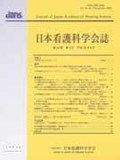Japanese
English
- 販売していません
- Abstract 文献概要
- 参考文献 Reference
要旨
目的:小児喘息患者に対するコンピュータを用いた教育介入研究を概観し,わが国における小児喘息教育への情報通信技術の適用可能性,および効果的な教育介入モデル・方略について検討した.
方法:7つのデータベースを用いて,“childhood”,“asthma”,“patient education”,“computer”をキーワードに検索を行った.抽出された493編のうち,採択基準をすべて満たした16編の文献をレビューの対象とした.
結果:小児喘息患者に対するコンピュータを用いた教育介入によって,患児および保護者の喘息知識の有意な増加,喘息関連症状の有意な改善,喘息セルフ・エフィカシーの向上などの効果が示された.教育介入研究の効果指標は,喘息症状関連アウトカムが最も多かった.教育介入において最も多く用いられていた理論・モデルは,社会的認知理論であった.
結論:小児喘息患者に対するコンピュータを用いた教育介入は,患児および保護者にとって有用であり,社会的認知理論に基づく教育介入が効果的であると考えられたことから,わが国の小児喘息教育に対する情報通信技術の適用可能性が示唆された.
Abstract
Purpose: The purpose of this study was to evaluate the usefulness of computerized patient education about childhood asthma in Japan and to explore the effective intervention model and strategy.
Methods: I conducted a literature search of seven databases using the following key words: childhood, asthma, patient education, and computer. Of the 493 records that had been extracted, I identi fied 16 that met all the criteria, and these were included in the review.
Results: This review suggested that computerized patient education for childhood asthma is useful, because reports showed a significant increase in asthma knowledge and asthma self-efficacy, with improvement of asthma symptoms. Asthma symptoms were predominantly evaluated as measurements of the success of intervention, but psychosocial variable were seldom evaluated in comparison with asthma symptom. The most frequently applied intervention model was social cognitive theory.
Conclusion: This literature review suggested that computerized patient education is helpful for childhood asthma patients and their parents and educational intervention based on social cognitive theory is effective. For the future of patient education about childhood asthma in Japan, further application of information and communication technology to patient education.
Copyright © 2013, Japan Academy of Nursing Science. All rights reserved.


